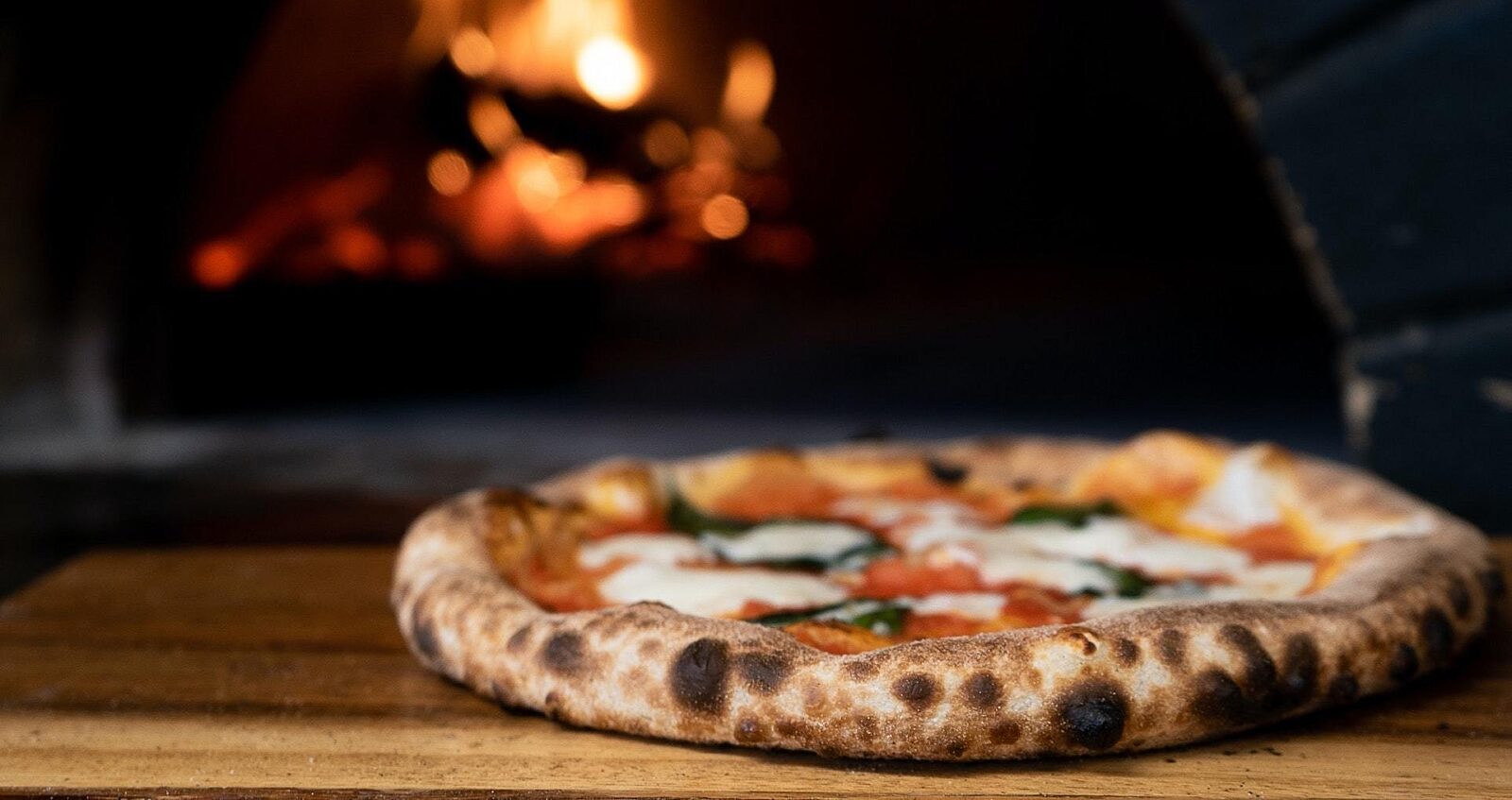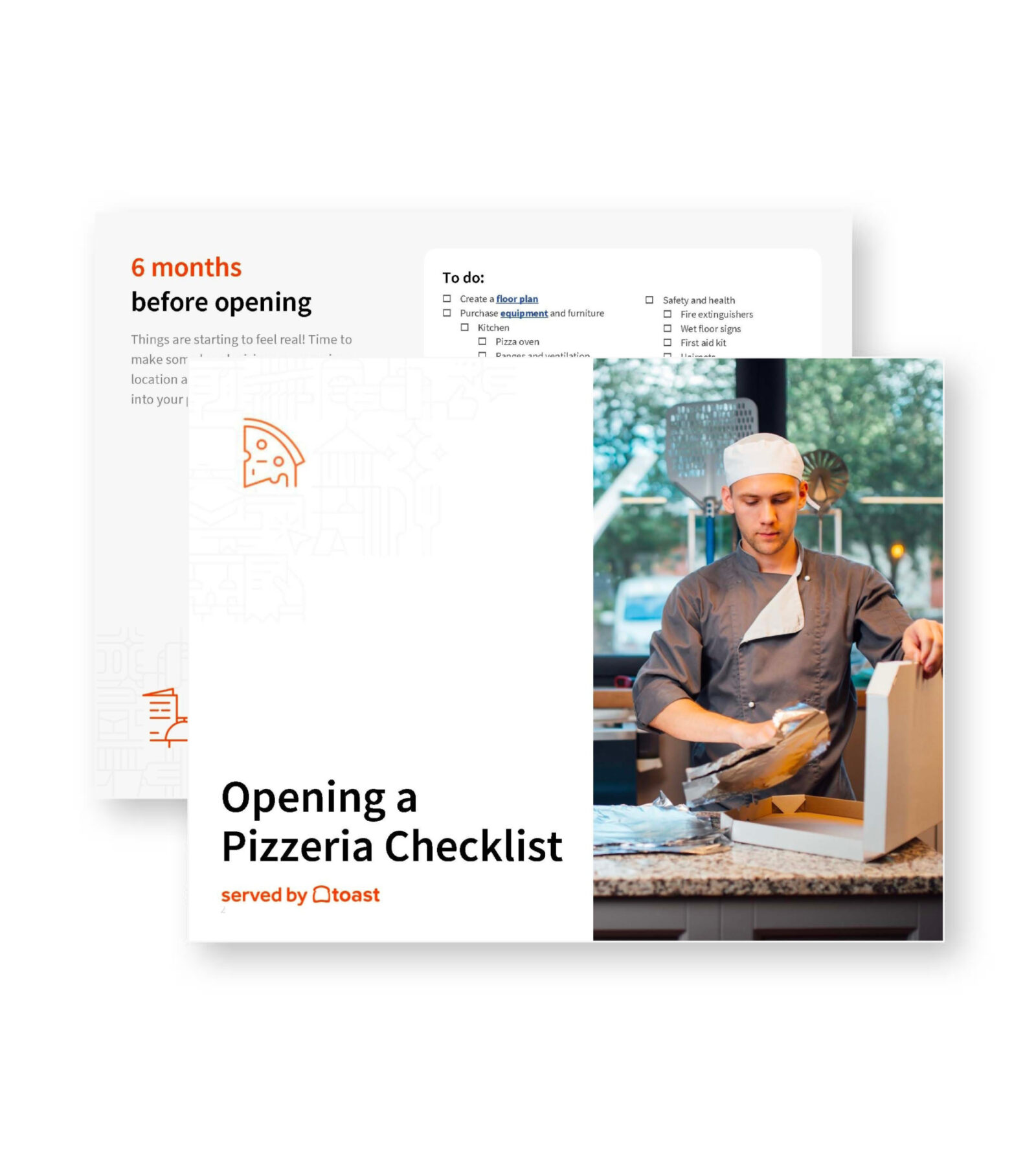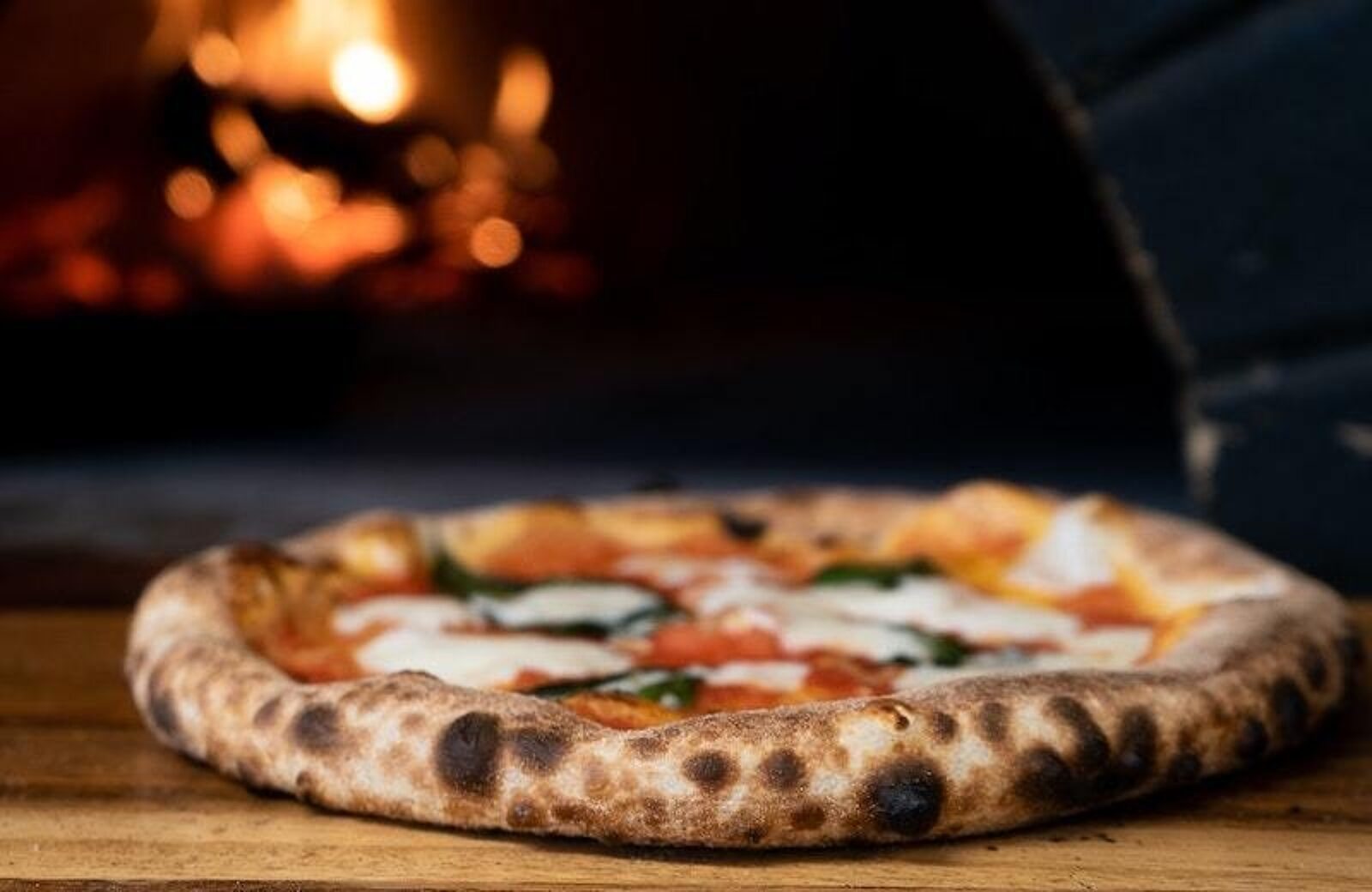
How Much Do Pizza Shops Make?
Running a successful pizza shop requires thoughtful financial management. Discover typical pizzeria revenue, costs, and profit margins here.

Caroline PriceAuthor


Opening a Pizzeria Checklist
So many things go into opening a pizzeria. With this free PDF checklist, you'll set your new business up for success.
Get free downloadIf you’re looking to open a pizza shop, there’s good news – according to Statista, pizza is the most frequently ordered type of fast food in the United States! Better yet, they report that 28% of American adults say they order pizza at least once a week, with 10% ordering it multiple times a week.
However, with that level of popularity also comes intense competition. In fact, there are over 80,000 pizza shops across the nation.
To be successful, it’s critical that you’re able to carefully manage your finances while still providing an awesome customer experience.
So, in this article, we’ll explore average pizzeria revenue and profit margin expectations for several different types of pizza shops. We’ll also provide a breakdown of typical pizzeria expenses, as well as strategies for optimizing costs and increasing revenue.
Key takeaways
Achieving profitability requires you to maximize pizzeria revenue while minimizing operational costs.
Your expected revenue, expenses, and profit margins depend heavily on the type of pizza shop you operate. For example, on average, franchise pizzerias have higher revenue and profit margins compared to independent establishments.
Effective strategies for increasing pizzeria revenue include refining your marketing strategies, increasing productivity with technology, increasing average order values, and boosting the frequency of customer visits.
Using a comprehensive point-of-sale (POS) system, like Toast, can help you both manage expenses and increase revenue.
Are pizza shops profitable?
Pizza shops can be profitable, but achieving profitability requires thoughtful management of expenses and revenue. Your revenue and profit potential also depend on several other factors, such as:
Type of pizzeria
Location
Market competition
In general, pizzerias have an average profit margin of 15% according to a study by Dodo Brands. At the same time, Sharp Sheets reports that pizzerias drive an average of $600,000 in annual revenue.
Overall, this means that the average pizza shop earns $90,000 per year in net profits. However, keep in mind that this is an average value that includes all types of pizza shops.
Opening a Donut Shop Checklist
So many things go into opening a donut shop. With this free PDF checklist, you'll set your new business up for success.

How much do different types of pizza shops make?
Independent pizzerias
Independent pizza shops, often small and family-owned businesses, typically serve local communities.
According to PMQ’s 2023 Pizza Power Report, in 2022 there were 44,644 independent pizzerias in the United States. Altogether, they generated a total of nearly $19.8 billion. This means that, on average, each pizza shop made over $440,000 in annual revenue.
Generally, independent pizzerias should aim for a profit margin of between 5% and 10%. So, if your pizza business makes $440,000 in annual revenue, you could expect to make between $22,000 and $44,000 per year in net profits.
Franchise pizza shops
Unlike independents, pizza shop chains have several unique benefits, such as:
Brand recognition
Established operational models
Marketing support
The PMQ Pizza Power Report states that there were 35,531 pizza shop chain locations generating a total of over $27 billion in 2022. This means the average franchise store made nearly $766,000 in annual revenue.
Because they typically have better operational efficiency and higher sales volumes than independents, franchise pizzerias usually have better profit margins of between 10% and 20%.
So, if you run a franchise pizza shop location generating $766,000 in revenue per year, you could expect to earn between $76,600 and $153,200 in annual net profits.
Gourmet and artisan pizzerias
Gourmet and artisan pizza shops can attract customers willing to pay more for a superior product.
For example, the average revenue for each Blaze Pizza, a pizza chain with a focus on artisanal and healthy ingredients, is $1.2 million according to Vetted Biz. They also report that owner-operators can expect a 15% profit margin, equating to about $180,000 in annual net profits.
Just bear in mind that since Blaze Pizza is a chain, it also has the resources that other chains have. If you plan to open an independent gourmet pizzeria, you might expect a net profit margin as little as about 8%.
Takeout and delivery-only pizza shops
Takeout and delivery-only pizza shops cut the costs associated with dine-in services. For example, Little Caesars, a popular pizza chain, mostly focuses on providing “Hot-N’-Ready” pizzas for takeout, as well as delivery.
In 2022, the franchise had 4,173 locations, and they generated a total of $3.52 billion in revenue.
This means that, on average, each store made over $840,000 in yearly revenue.
Because takeout pizza shops generally have lower overhead costs, net profit margins are typically as low as 10% or as high as 25%.
So, if your takeout or delivery-only pizzeria earns $840,000 in annual revenue, you could expect to make anywhere between $84,000 and $210,000 in annual net profits.
Breakdown of pizzeria costs
Rent and utilities
One of the biggest expenses your pizzeria will need to manage is rent and utilities. However, this cost can vary significantly based on your location.
For example, more affluent neighborhoods with lots of foot traffic have a higher potential for business revenue, driving up the demand for and prices of leases in these areas.
Additionally, the type of pizzeria you operate can have a big impact on how much you need to spend on rent. While a takeout and delivery-only pizza shop may not need much space, a gourmet pizzeria may need extra square footage to offer seating to customers.
Generally, you should aim to spend about 10% to 15% of your total revenue towards rent.
Lastly, be sure to think about the cost of utilities, such as:
Electricity
Gas
Water
Internet
Like rent prices, utility expenses will also vary widely based on your location and the size of your store. However, you should typically aim to spend between 2% and 5% of total revenue towards utility costs.
Average Cost of Pizzeria Rent and Utilities: 12% to 20% of total revenue
Licenses and permits
While licenses and permits shouldn’t be a huge expense for your pizzeria, they’re vital to ensuring you operate legally. Some examples of licenses and permits you might need include:
Business License: Required to legally operate your business within your local jurisdiction
Food Service License: Necessary for handling and serving food
Health Department Permit: Allows the health department to inspect your establishment for compliance with food safety regulations
Liquor License (if applicable): If your pizzeria plans to serve alcohol, you’ll need a license to sell beer, wine, or spirits
Sign Permit: Required if you plan to install signage outside your establishment
Building Permit: Necessary if you’re making any major structural changes to your location, such as adding a pizza oven or remodeling
Employee Identification Number (EIN): Issued by the IRS for tax purposes
Altogether, licenses and permits should generally cost you about $100 to $500 per year. However, it could be more depending on your location and local regulations.
Average Cost of Pizzeria Licenses and Permits: Less than 1% of total revenue
Insurance
Like licenses and permits, insurance likely shouldn’t eat into your profit margins too much. However, it’s still vital to ensure you secure the right types of coverage for your business.
Generally, you’ll want to be sure to obtain the following kinds of coverage:
General Liability Insurance
Workers’ Compensation Insurance
Product Liability Insurance
Liquor Liability Insurance (if applicable)
According to How To Start An LLC, most pizza businesses tend to spend between $500 and $1,200 per year on insurance. However, keep in mind that these rates can vary based on several factors, including your location and claims history.
Average Cost of Pizzeria Insurance: Less than 1% of total revenue
Loan payments
The cost to open a pizzeria typically ranges from $95,000 to $2 million, so you’ll likely need to finance your business. Ultimately, the cost of your loan payments will depend on:
The size of the loan
Interest rates
Repayment terms
For example, if you took out a $100,000, 10-year loan at 6% interest, your monthly payment would be around $1,100. Meanwhile, a $100,000, 5-year loan at 6% interest would require a $1,900 payment each month.
Average Cost of Pizzeria Loan Payments: 3% to 10% of total revenue
Cost of goods sold (COGS)
Cost of goods sold is generally lower for pizza shops compared to other types of restaurants. However, COGS will still likely be one of your largest expenses.
According to Sharp Sheets, pizzerias typically achieve an 80% gross margin, meaning 20% of your total revenue goes towards COGS. This figure represents the cost of ingredients like dough, sauce, cheese, and toppings.
So, if you sell a pizza for $10, it should ideally cost you about $2 to make, meaning your gross profit is $8 per pizza.
Average Cost of Pizzeria COGS: 20% of total revenue
Labor costs
Labor costs are another significant expense for pizza shops. This is especially true for gourmet and artisan pizzerias, which may require highly-skilled workers and therefore need to pay higher wages.
Additionally, staffing expenses can vary based on whether you plan to be an owner-operator or decide to hire a manager and be a more hands-off owner.
While Sharp Sheets reports that labor cost percentages are often as high as 50%, BNG Payments suggests that labor costs for pizza shops should fall between 20% and 40%.
Average Pizzeria Labor Costs: 20% to 40% of total revenue
Marketing and advertising
Marketing and advertising costs can vary widely from business to business. For example, a new pizza shop will likely need to invest more heavily in marketing to get their business off the ground and develop loyal customers.
On the other hand, more established pizzerias may not need to spend as much, especially if they’re located in high-traffic areas.
While there’s no perfect percentage of revenue to spend on marketing, Sharp Sheets reports that about 8% is standard, while BNG Payments suggests spending 3% to 7%.
Average Cost of Pizzeria Marketing and Advertising: 3% to 8% of total revenue
Delivery costs
If you run your own delivery service, you’ll need to consider expenses like:
Fuel
Driver wages
Vehicle maintenance
Alternatively, you may want to work with third-party delivery services, like Uber Eats or DoorDash.
Just bear in mind that these services will charge you a fee on every order. Uber Eats delivery fees can range from 15% to 30%, while DoorDash delivery fees range from 15% to 30%.
Average Pizzeria Delivery: 5% to 10% of total revenue
Franchise royalty fees (if applicable)
If you plan to operate a pizza shop chain, you’ll also need to think about franchising fees. While you’ll pay some fees when you launch your business, franchises also collect royalty fees.
For example, Franchise Help reports that the royalty fee for Domino’s is 5.5%. So, if you run a Domino’s and earn the average annual pizza chain revenue of $766,000, this expense will amount to $42,130 per year.
However, keep in mind that different franchises have different fee structures. For example:
Papa John’s: 5% royalty fee on total revenue, plus ongoing contributions to national marketing campaigns
Little Caesars: 6% royalty fee on gross sales, plus up to 7% towards the franchise’s advertising fund
Pizza Hut: 6% royalty fee on all sales, plus 3% towards national marketing campaigns
In general, you can expect to spend about 5% to 6% of total revenue towards franchising royalties.
Average Cost of Pizzeria Franchising Fees: 5% to 6% of total revenue
“When you think about the health of this quarter, and how order counts came in so strong, all of those customers are going into the flywheel of this loyalty program… So today’s orders are really tomorrow’s sales. That’s why we’re so excited about how the loyalty program is working, with everything else that’s firing on the business right now.”
Russell Weiner
Domino's CEO
How to optimize pizzeria costs
There are quite a few costs you’ll need to manage as you operate your pizza shop. However, to achieve profitability, it’s essential to optimize them. Fortunately, there are several areas you can focus on to do this, such as:
Ingredient Sourcing:
Negotiate with suppliers for bulk discounts
Consider using seasonal ingredients
Manage inventory efficiently to reduce waste
Labor Management:
Cross-train employees to perform multiple roles
Consider investing in technology to streamline operations
Energy and Utilities:
Use energy-efficient appliances to reduce utility bills
Implement maintenance programs to keep equipment running efficiently
Optimize heating/cooling systems to avoid unnecessary energy consumption
Rent and Overhead:
Negotiate favorable lease terms
Consider shared spaces or ghost kitchens to minimize rent
Ultimately, it’s key to reduce costs wherever possible without compromising the quality of your service.
How to increase pizzeria revenue
1. Improve your marketing strategies
Effective marketing is vital for attracting new customers to your pizza shop. While there are tons of tactics you can implement for your business, be sure to consider the following advice as you develop your strategy:
Social Media: Social media platforms like Instagram, Facebook, and TikTok can be powerful tools for showcasing your pizzas, highlighting customer testimonials, and running promotions.
Paid Ads: Consider paid ads on Google and social media to target specific demographics.
Email Marketing: Think about developing an email marketing campaign to promote specials and new menu items.
Personalize Your Marketing Efforts: Using customer data to tailor your marketing efforts is a great way to connect with customers. For example, think about sending SMS offers based on a customer’s past orders, such as a free dessert on their birthday.
Highlight Unique Selling Points: Identify what makes your pizza shop stand out, whether it’s artisanal pizza dough, secret family recipes, or locally-sourced menu items.
Engage with Your Community: Give customers opportunities to interact with your brand beyond just ordering food. For example, consider sponsoring local sports teams, participating in charity events, or hosting pizza-making workshops.
Monitor and Adjust: Continuously track the performance of your marketing campaigns using tools like Google Analytics, social media insights, and customer feedback.
2. Boost productivity and efficiency with technology
Integrating modern technology into your pizzeria operations is essential for meeting customer expectations. Some of most effective tools for streamlining your operations and providing an excellent customer experience include:
POS Systems: Invest in a state-of-the-art pizza POS system that provides inventory management tools, online ordering features, and customer loyalty programs.
Online Ordering and Delivery: Expand your customer base by offering online ordering and delivery through your website, or through third-party apps like Uber Eats and DoorDash.
Inventory Management Software: Integrate inventory management software to prevent you from running out of popular items and missing out on sales.
3. Increase average order value (AOV)
To maximize revenue, it’s important that customers spend enough money each time they visit your pizza shop. However, raising your menu prices can upset customers and make you less competitive in the local market.
Instead, consider implementing these strategies to encourage customers to spend more on your pizza:
Offer Premium Products: Design a line of speciality pizzas featuring gourmet ingredients and price them higher than standard menu items.
Cross-Sell: Train staff to recommend additional items that complement a customer’s order.
Bundling: Create combo deals where customers can get a slight discount compared to purchasing the items separately.
Promote Limited-Time Offers: Create a sense of urgency by introducing limited-time specials that customers won’t want to miss.
4. Increase customer purchase frequency
To create long-term sustainability, it’s crucial that you maximize customer retention to your pizzeria.
For example, loyalty programs are a great way to encourage customers to visit your pizza shop more often. So, consider developing a loyalty program that rewards customers for frequent visits or orders.
You can also use special offers to encourage customers to sign up for your loyalty program. For instance, Domino’s “Emergency Pizza” campaign offered customers a free pizza if they signed up for their rewards program. Commenting on the campaign, Domino's CEO Russell Weiner told Restaurant Business Online:
“When you think about the health of this quarter, and how order counts came in so strong, all of those customers are going into the flywheel of this loyalty program… So today’s orders are really tomorrow’s sales. That’s why we’re so excited about how the loyalty program is working, with everything else that’s firing on the business right now.”
Additionally, keep your menu fresh by regularly introducing new menu items. For instance, you might think about offering a “pizza of the month” to create anticipation and encourage customers to try something new each time they visit.
Increase pizzeria revenue and minimize costs to maximize profits
To run a successful pizza shop, it’s critical that you optimize your costs while looking for ways to increase revenue. While there’s a lot to manage, there are ways to make the process simpler.
For example, with Toast’s POS system, you can gain insights into and better manage expenses like inventory, staffing, and more.
At the same time, it offers several tools you can use to boost revenue, like online ordering, delivery integrations, and loyalty programs.
To discover all the ways Toast can help maximize your pizza shop’s profits, be sure to check out
Is this article helpful?
DISCLAIMER: This information is provided for general informational purposes only, and publication does not constitute an endorsement. Toast does not warrant the accuracy or completeness of any information, text, graphics, links, or other items contained within this content. Toast does not guarantee you will achieve any specific results if you follow any advice herein. It may be advisable for you to consult with a professional such as a lawyer, accountant, or business advisor for advice specific to your situation.
Read More
Subscribe to On the Line
Sign up to get industry intel, advice, tools, and honest takes from real people tackling their restaurants’ greatest challenges.


